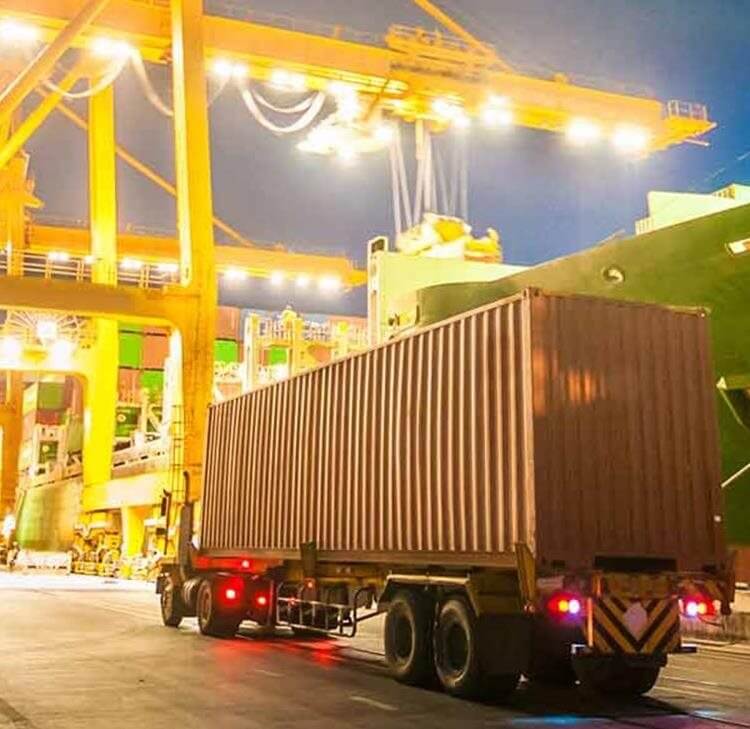A flurry of unprecedented quick-fire tariff tweaking by President Trump which caused chaos to global market conditions serves as a reminder of the essential need for flexibility in all commercial contracts, including the complex world of tech transactions.
At the time of writing, there is a 90 day pause on higher US tariffs, but a “universal 10%” baseline tariff remains in place for most countries. These tariffs (which are taxes charged on imported goods and products bought from other countries) will lead to an increase in the cost of those goods and products being sold to the US, which needs to be borne by either the seller (exporter), the buyer (importer), the end customer, or a combination of them.
Opportunities and challenges
David Hill, Principal Associate in the commercial technology team at Browne Jacobson, assesses the impacts on the tech sector and sets out further below practical steps tech businesses should be taking:
For UK businesses selling tech goods and products to the US, the tariff changes could have an immediate impact as they will be directly affected and will need to assess where the cost increase falls.
The US tariffs may also have an indirect consequence whereby there may be a re-direction of global tech goods and products which were previously going to be exported from other countries to the US, but due to high US tariffs those goods and products could now be re-directed away from the US and towards the rest of the world, including the UK – this could be especially true for products from China which, at the time of writing, has been hit with a whopping 125% tariff. This may present an opportunity for UK based companies to take advantage of a higher supply of, and potentially a cheaper price for, such tech goods and products, whether for immediate use or as components to be integrated into their goods and products.
As recent days have shown, this is a fast-moving and changing landscape. Looking ahead businesses in the tech sector should be preparing for dealing with higher tariffs / taxes, including the potential of retaliatory tariffs / taxes on goods and services into and out of other countries.
Accelerated AI adoption and governance concerns
Richard Nicholas, Partner and head of the data, digital and sourcing teams in Birmingham, observes that the most likely consequence of the tariffs will be an accelerated adoption of AI:
While President Trump's goal of reducing reliance on foreign manufacturing and boosting US domestic production may succeed long-term, the immediate effect will likely increase operational costs for American-based businesses dependent on foreign components and restrict market access for exporters to the US.
Both outcomes will drive businesses to seek cost efficiencies and re-engineer their processes. What might have been viewed as a long-term innovation strategy could become an urgent operational necessity. Unfortunately, in the rush to adapt, this may compromise proper AI governance structures.
For the UK, retaliatory tariffs – such as on US-based IT services – remain possible. This could backfire, however, given that British businesses rely heavily on platforms like Microsoft, Google, Amazon Web Services and Salesforce. A sudden increase in licensing costs from these providers would significantly impact UK operations.
Practical steps for tech businesses
The current tariff position, alongside the continual state of flux, has implications potentially affecting various aspects of tech sector operations, which means that businesses negotiating tech transactions need to take proactive measures to mitigate risks and maintain competitive advantage. The following steps provide a framework for navigating the changing trade landscape and ensuring your business remains resilient in the face of these challenges.
- Assess exposure to tariffs – Identify if and when tariffs apply to your business. The tech supply chain is often highly complex, with goods moving across multiple borders. Even if your business is not directly exporting, you may be indirectly impacted by upstream or downstream cost increases.
- Understand which existing contracts are impacted – Many tech transactions include a mix of goods, services, support, maintenance and managed services. Review which of your contracts may be affected and to what extent.
- Audit impacted contracts – How do these current agreements deal with changes to tariffs or taxes, and the potential knock-on effects on pricing and delivery. Seek legal advice on what commercial and/or legal levers are available to pull, including:
- Whether there are specific tariff or tax clauses, or whether the contract is silent on these issues.
- The pricing model (e.g. fixed vs cost-plus) and whether cost increases can be passed on to customers or suppliers.
- Any commercial terms that lock you in, or flexibility mechanisms such as change control processes, termination or exit rights.
- Options for renegotiation – and if pursued, ensure contractual procedures are followed correctly. If renegotiation fails, consider the dispute resolution provisions.
- Whether Force Majeure or “frustration” arguments might apply.
- Future-proof new contracts – New agreements being negotiated should be robustly drafted to ensure protections against the uncertainty in the global economic environment.
If you'd like to discuss how these changes might affect your contracts specifically, our team can provide commercial and practical legal advice tailored to your business needs.
Contents
- Navigating US tariffs: Practical guidance for global businesses
- How will US tariffs affect energy and infrastructure sectors in UK and Ireland?
- US tariffs: Implications for the food and drink sector in UK and Ireland
- US tariffs: Implications for the UK automotive sector
- What new US tariffs mean for retail and supply chain

Richard Nicholas
Partner
richard.nicholas@brownejacobson.com
+44 (0)121 237 3992
You may be interested in
Legal Update
Are local authorities going to gain powers to charge fees for intervention?
Legal Update
Distribution in the UK and the EU
Legal Update
The EU Deforestation Regulation: Implications and actions for the fashion industry
Press Release
UK-EU reset deal: Comments from Browne Jacobson experts
Press Release
US-UK trade deal: Reaction from Browne Jacobson lawyers
Legal Update
How will US tariffs affect energy and infrastructure sectors in UK and Ireland?
Legal Update
What new US tariffs mean for retail and supply chain
Legal Update
Navigating US tariffs: Practical guidance for global businesses
Legal Update
US tariffs: Implications for the UK automotive sector and practical steps for businesses
Legal Update
US tariffs: Implications for the food and drink sector in UK and Ireland and practical steps for businesses
Legal Update
US tariffs: Market chaos and implications for the UK tech sector
Legal Update - Beyond Borders insights
Beyond Borders, Spring 2025
Legal Update
Alcohol charity on the “Naughty List” for attempts to trade mark “DRY JANUARY”
Legal Update
Considering the growing trends of mindful drinking
Legal Update
DEFRA provides clarity around the GB wide 'Not for EU' labelling obligations
Legal Update - Beyond Borders insights
Beyond Borders, December 2024
Legal Update
The EU Cyber Resilience Act (CRA)
Legal Update
Navigating the waters of compliance: Understanding the Trade, Aircraft, and Shipping Sanctions (Civil Enforcement) Regulations 2024
Legal Update
Supreme Court re-instates injunction in Tesco fire and re-hire case
Legal Update
The future of food waste management in the UK: A guide for businesses
Opinion
Forced labour goods: a landmark decision
Press Release
Browne Jacobson contributes to report promoting greater UAE-UK collaboration in cancer care
Opinion
New hope for the manufacturing sector?
Legal Update
Navigating Oil Price Cap legislation: LMA issues revised Cargo and Hull wordings
Legal Update
The Home Affairs Committee launched another inquiry into fraud - Stop! Think Fraud
Legal Update
Veganism and manufacturing: Supply chain issues
Press Release
Browne Jacobson partner Jeanne Kelly elected President of the British Irish Chamber of Commerce
Published Article
Kick-starting the UK hydrogen economy
Published Article
What are freeports and what benefits could they offer?
Legal Update
Digital Markets Act and Data Platforms - FRANDs for life?
The Digital Markets Act (the “DMA”) joins the dots between competition law and data protection law and actively targets data-driven platforms. It is also a comprehensive regulation to take note of, with familiar GDPR-style fines tied to turnover.
Legal Update
The Omnibus Directive is almost here
Legal Update
New year, new Brexit transport rules
From 1st January, new import rules come into effect, with potential for significant delay, disruption and cost for importers and exporters.
Legal Update
REACH Registration post-Brexit
Although the UK’s departure from the EU means that the EU REACH regulation no longer applies, UK REACH has stepped in to fill the gap, and UK-based companies exporting to the EU are now facing two chemicals regulation frameworks to deal with when before there was just one. Is your company ready for the challenge?
Legal Update
Corporate finance update - May 2021
The Browne Jacobson corporate finance team continues to be a leading advisor, receiving recognition as the go-to advisor, for corporate M&A and private equity transactions.
Guide
Brexit overview: intellectual property and Brexit
We can how help you understand the potential issues that any changes will have on your business.
Guide
Brexit overview: competition law and Brexit
We can how help you understand the potential issues that any changes will have on your business.
Guide
Brexit overview: your use of data and Brexit
Despite the lack of clarity around Brexit, there are key data issues that can be addressed now. We can help you with the steps you need to take to mitigate the risks.
Guide
Brexit overview: your corporate structure and Brexit
We can help you navigate uncertainty, mitigate any legal risks and even find ways for your organisation to capitalise through a more efficient corporate structure.
Guide
Brexit overview: your commercial contracts and Brexit
Although there is significant uncertainty over how Brexit will affect organisations trading across the EEA, we can help you put together an appropriate action plan.
Guide
Brexit overview: your people and Brexit
Despite the uncertainty, however, we can help you take some sensible steps now to prepare your workforce for the implications of Brexit.
































